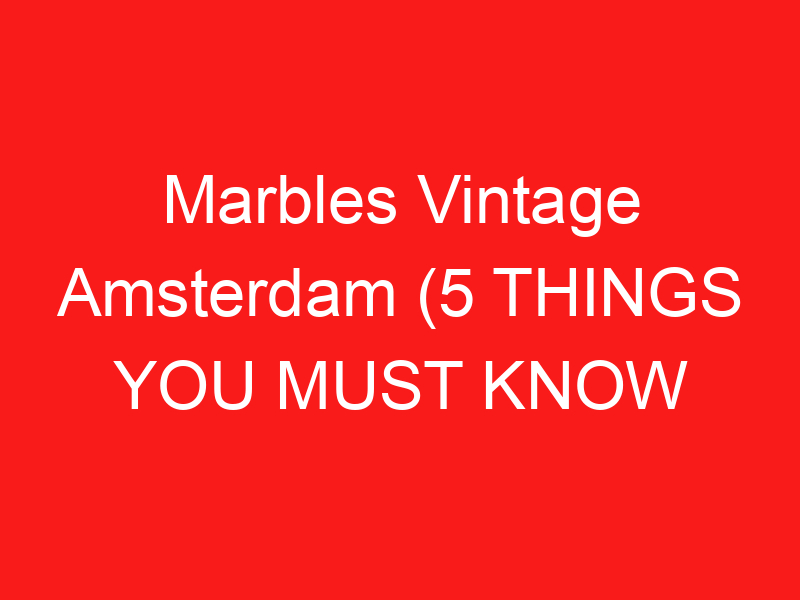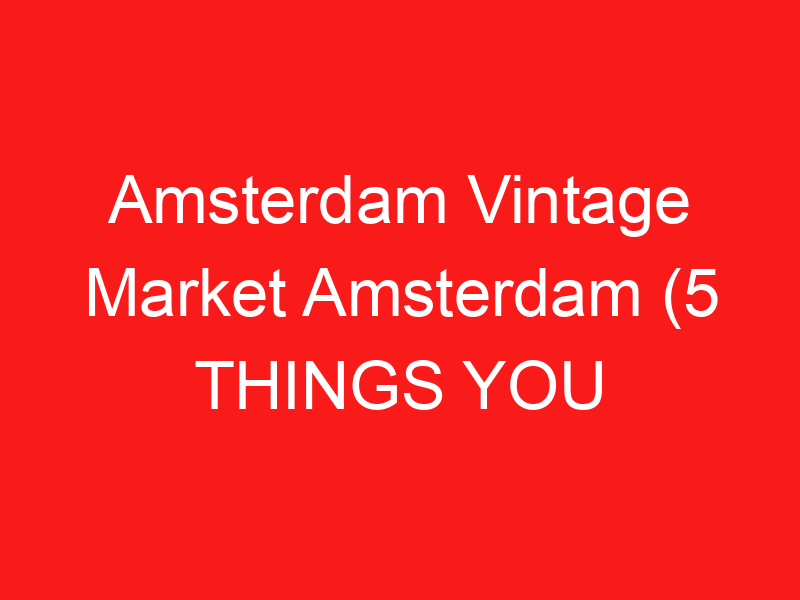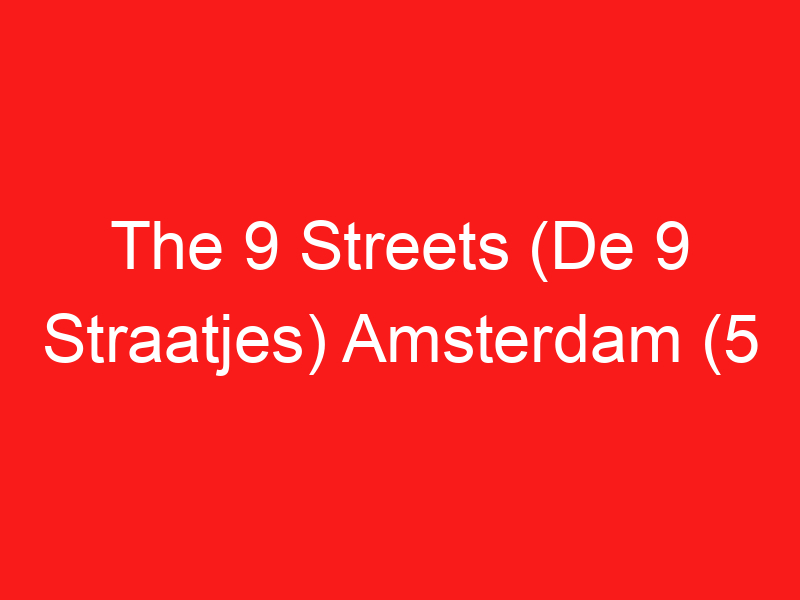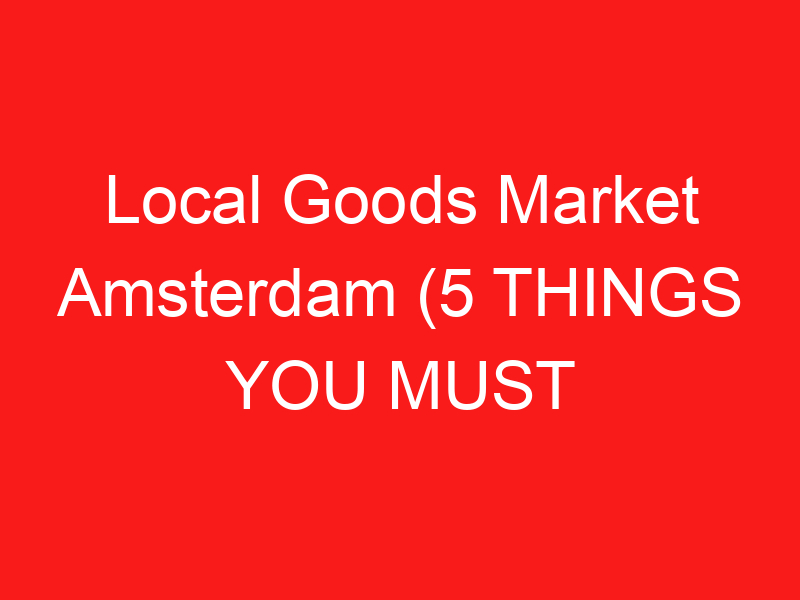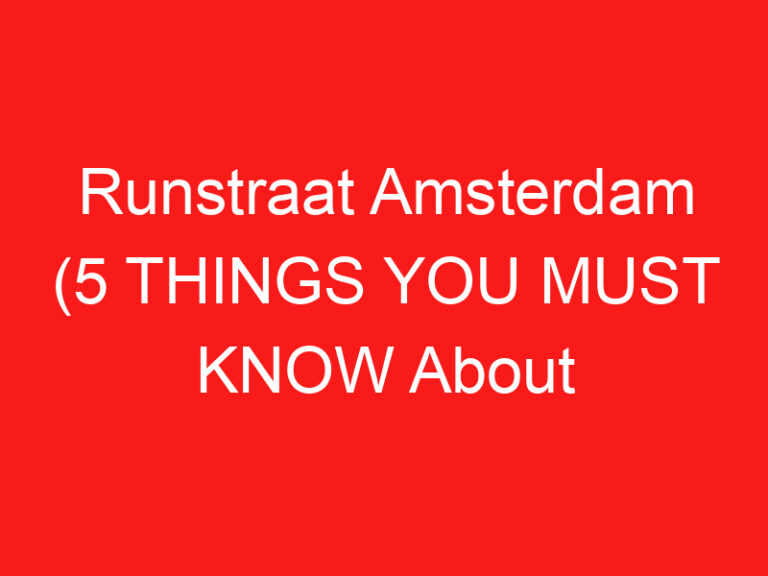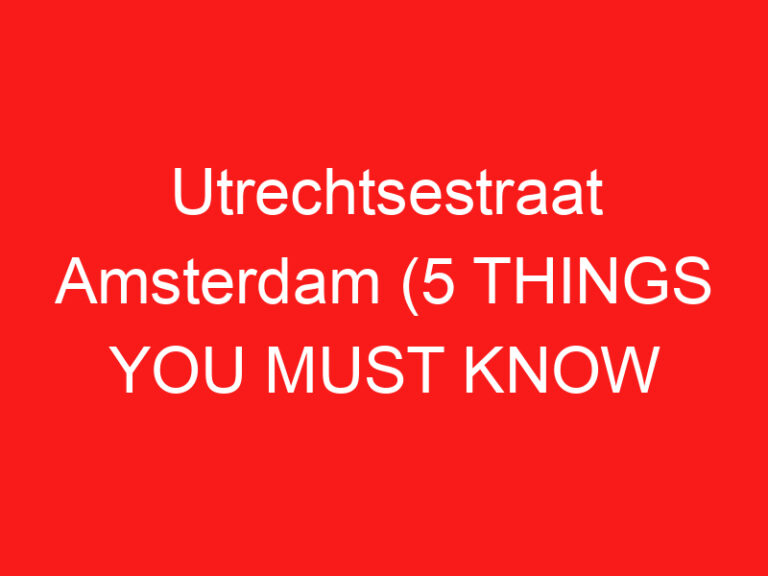Waterlooplein vlooienmarkt Amsterdam (5 DINGEN DIE JE MOET WETEN Over deze vlooienmarkt
Waterlooplein vlooienmarkt Amsterdam: An Unmissable Experience
Amsterdam is a city known for its rich history, Levendige cultuur, and unique shopping experiences. One of the most iconic places to immerse yourself in this local charm is the **Waterlooplein Flea Market**.
This bustling market is a treasure trove of vintage finds, Eclectische goederen, and a glimpse into the heart of Amsterdam’s local life.
Als u een bezoek plant, there are essential insights you need to know to make the most of your experience. In dit artikel, we’ll explore five critical aspects of the Waterlooplein Flea Market that will enhance your visit and help you navigate this vibrant marketplace like a pro.
1. History and Significance of Waterlooplein Flea Market
The Waterlooplein Flea Market has a rich history dating back to the 19th century. Opgericht in 1885, it began as a place for Jewish merchants to sell their goods.
In de loop der jaren, it has evolved into a lively hub for both locals and tourists, offering a unique blend of antiques, vintage kleding, en handgemaakte ambachten..
The market is located near the historic Jewish Quarter, which adds depth to its significance. Hier, you can find stalls filled with everything from second-hand books to quirky souvenirs, all while soaking in the vibrant atmosphere of Amsterdam.
One of the market’s unique features is its commitment to sustainability. Many vendors sell upcycled and vintage items, promoting a culture of reuse and recycling.
This focus on sustainability resonates with the growing global consciousness about environmental issues, making your shopping experience not just enjoyable but also responsible.
As you wander through the stalls, you’ll encounter a diverse range of sellers, each with their own stories and collections. Engaging with them can provide insights into the history of the items they sell, waardoor je bezoek nog verrijkender wordt.
2. What to Expect at the Market
The market is open every day except Sunday, making it a convenient stop during your Amsterdam adventures.
Expect to find a mix of items, including vintage clothing, juwelen, antiek, and even unique artworks. Each stall offers its own charm, and you never know what hidden gems you might discover.
For vintage lovers, this market is paradise. You can find everything from retro fashion to classic vinyl records.
Bovendien, the prices are generally reasonable, and bargaining is part of the fun. Don’t hesitate to negotiate with vendors; it’s a common practice and often leads to better deals.
Eten is een ander hoogtepunt van de markt. While shopping, take a break and indulge in some local snacks.
You’ll find vendors selling traditional Dutch treats like stroopwafels, haring, en poffertjes.
These delicious bites will fuel your exploration and give you a taste of local cuisine.
The market is not just a shopping destination; it’s a social hub where you can meet locals and fellow travelers alike.
The lively atmosphere encourages interaction, making it an ideal spot to strike up conversations and share experiences.
3. Tips voor het navigeren op de markt
You’ll be doing a lot of walking and browsing, so comfort is key.
It’s also wise to visit early in the day to avoid the crowds and have first dibs on the best items.
Arriving early allows you to explore the stalls at a leisurely pace and engage with vendors without feeling rushed.
Neem contant geld mee, as many vendors prefer it over cards.
Having small bills will make transactions smoother and help you stick to your budget.
If you’re looking for specific items, don’t hesitate to ask vendors if they have them. Many are willing to help you find what you’re looking for or point you in the right direction.
Another essential tip is to keep an open mind.
While you may have specific items in mind, the joy of a flea market lies in unexpected discoveries.
You might stumble upon something you never knew you needed!
Ten slotte, take your time. The market is a place to explore, so don’t rush through it.
Savor the experience, enjoy the atmosphere, and allow yourself to get lost in the myriad of stalls.
4. Unique Finds and Souvenirs
Unlike typical tourist shops, the items here have character and history.
From vintage postcards to antique jewelry, the market is a treasure trove for collectors and casual shoppers alike.
If you’re a fan of fashion, keep an eye out for vintage clothing.
You can find everything from 70s-style dresses to retro jackets.
These pieces not only make for great outfits but also serve as conversation starters about your travels.
Voor kunstliefhebbers, the market offers a selection of local artworks, prints, en handgemaakte ambachten..
Supporting local artists is a meaningful way to remember your trip and contribute to the community.
Another unique find is vintage home decor.
You can discover quirky items like old cameras, typewriters, and even furniture.
These pieces add a touch of nostalgia to your home and serve as reminders of your Amsterdam adventure.
Don’t forget to explore the book stalls, which often feature a mix of English and Dutch titles.
Whether you’re looking for a novel to read or a coffee table book about Amsterdam, you’re likely to find something that piques your interest.
5. The Cultural Experience of Waterlooplein
The market is a melting pot of diverse backgrounds, reflecting the multicultural essence of Amsterdam.
As you browse, you’ll encounter vendors from various cultures, each bringing their unique flair to the market.
Engaging with them can provide insights into their stories and the significance of the items they sell.
The market also hosts occasional events and performances, wat bijdraagt aan de levendige sfeer.
Keep an eye out for live music or art displays that may be happening during your visit.
These events enhance the cultural experience and provide a deeper understanding of Amsterdam’s artistic scene.
Bovendien, the location of the market near the Jewish Quarter adds historical depth to your visit.
You can take a moment to reflect on the area’s rich history and the contributions of the Jewish community to Amsterdam’s culture.
This connection to history makes your shopping experience more meaningful, as you appreciate the stories behind the items and the market itself.
In het kort, the Waterlooplein Flea Market is a vibrant blend of shopping, cultuur, en geschiedenis.
It’s a must-visit for anyone looking to experience the true essence of Amsterdam.
Frequently Asked Questions about Waterlooplein Flea Market
| Vraag | Antwoord |
|---|---|
| What are the opening hours of the Waterlooplein Flea Market? | The market is open daily from 9:00 's Ochtends tot 6:00 PM, except on Sundays. |
| Is there an entry fee to the market? | Nee, entry to the Waterlooplein Flea Market is free for everyone. |
| Can I find food options at the market? | Ja, there are several food stalls offering local snacks and drinks. |
| Is it easy to reach Waterlooplein by public transport? | Absoluut! The Waterlooplein tram stop is nearby, making it easily accessible. |
| Are there any ATMs near the market? | Ja, there are ATMs in the vicinity for cash withdrawals. |
| What should I do if I can’t find what I’m looking for? | Don’t hesitate to ask the vendors; they may have what you need or can guide you to another stall. |
| Is bargaining expected at the market? | Ja, bargaining is common and part of the shopping experience at flea markets. |
Conclusie
The Waterlooplein Flea Market in Amsterdam is more than just a shopping destination; it’s a vibrant cultural experience that encapsulates the spirit of the city.
From its rich history to the diverse range of unique finds, this market offers something for everyone.
Of je nu op zoek bent naar vintage kleding, local art, or simply want to soak in the atmosphere, the Waterlooplein Flea Market is a must-visit.
Door deze vijf essentiële inzichten in gedachten te houden, you’ll be well-equipped to navigate the market like a local.
Dus, lace up your comfortable shoes, bring some cash, and get ready to explore one of Amsterdam’s most beloved treasures!

